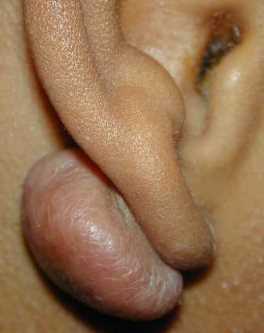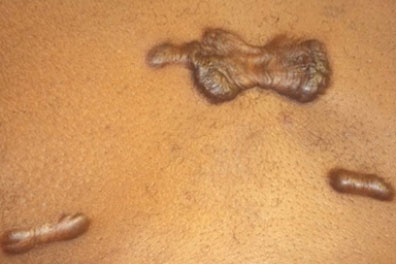Dallas
214-456-2240
Fax: 214-456-8881
Request an Appointment with codes: Plastics and Craniofacial Surgery
214-456-2240
Fax: 214-456-8881
Request an Appointment with codes: Plastics and Craniofacial Surgery
 When the scar from a cut or wound grows and spreads beyond the size of the original wound, it is known as a keloid. Keloids may vary in size, shape, and location. They occur more often in darker skin or in people with a family history of keloids. Keloids are common on the ear lobes, neck, hands, or forearms, and usually occur after an injury or infection. Occasionally they occur spontaneously, especially on the mid-chest area. Keloids often follow surgery, cuts, scrapes, or ear-piercing. They can even be caused by acne on the face, chest, and back. Keloids are usually just a cosmetic problem. They never become cancerous.
When the scar from a cut or wound grows and spreads beyond the size of the original wound, it is known as a keloid. Keloids may vary in size, shape, and location. They occur more often in darker skin or in people with a family history of keloids. Keloids are common on the ear lobes, neck, hands, or forearms, and usually occur after an injury or infection. Occasionally they occur spontaneously, especially on the mid-chest area. Keloids often follow surgery, cuts, scrapes, or ear-piercing. They can even be caused by acne on the face, chest, and back. Keloids are usually just a cosmetic problem. They never become cancerous.

There is no satisfactory treatment for keloids. If you have a keloid, seek the advice of your general practitioner, dermatologist or plastic surgeon.
Unfortunately, keloids tend to return and even enlarge, especially after treatments. The above treatments are helpful, but will not usually make the area of scarring look like perfectly normal skin. Some of these treatments are not covered by some insurance plans.

